Spring woodland magic; magnolias and more

The sight of magnolia flowers and cherry blossom tells us that spring is well and truly here. As the sun rose through mist on an early March morning, I explored some of the woodland garden areas at RHS Wisley.
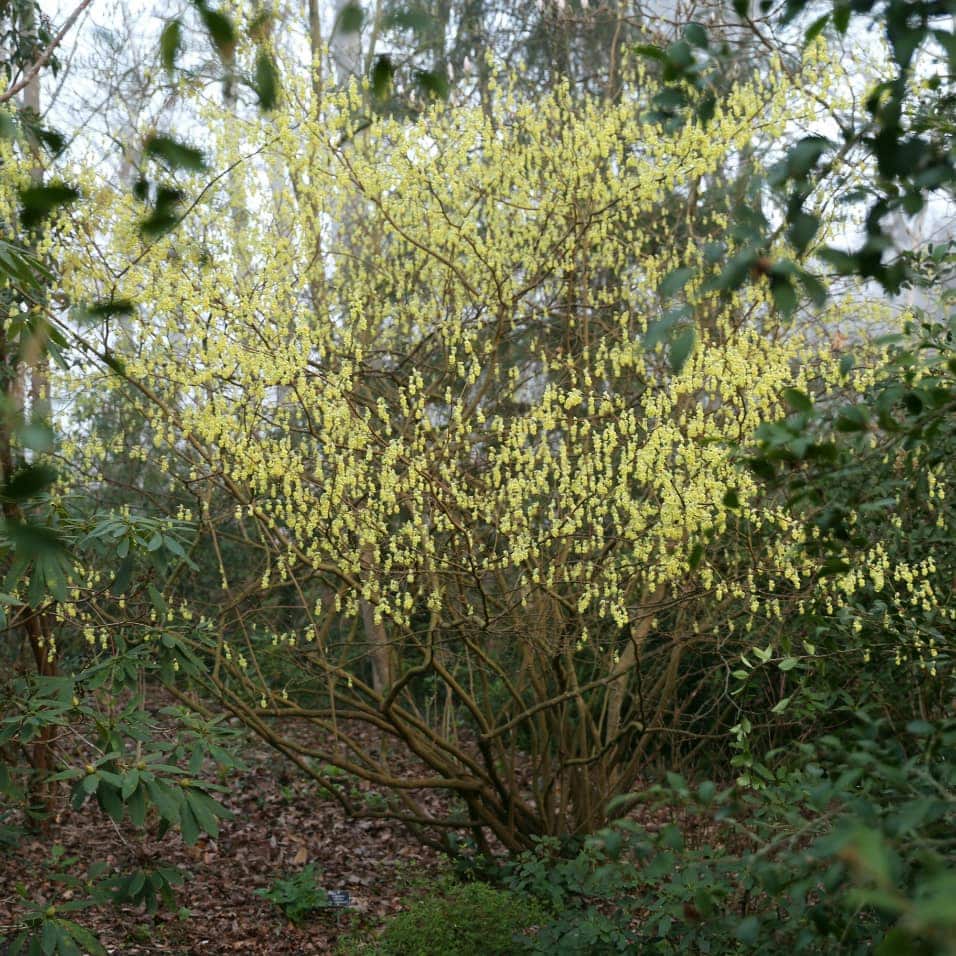
While witch-hazels (Hamamelis) tend to flower in mid-winter, and true hazels (Corylus) are adorned with their beautiful catkins in late winter, Chinese winter hazel (Corylopsis) fizz with scented pastel-lemon flowers from latest winter into early spring. As we associate our native hazels with woodlands and hedgerows, I find these other hazel-like trees and shrubs sit easily in the landscape. Other species of Corylopsis to look out for are C. pauciflora from Japan and Taiwan, with small leaves and the earliest to flower, and C. glabrescens from Japan, which is particularly wide-spreading.

Graceful from head to toe, Helleborus viridis subsp. occidentalis is a British native naturally found growing on limestone and chalky soils in the south of England. But clearly not too fussy, doing well here on the acidic sandy soil of Wisley.
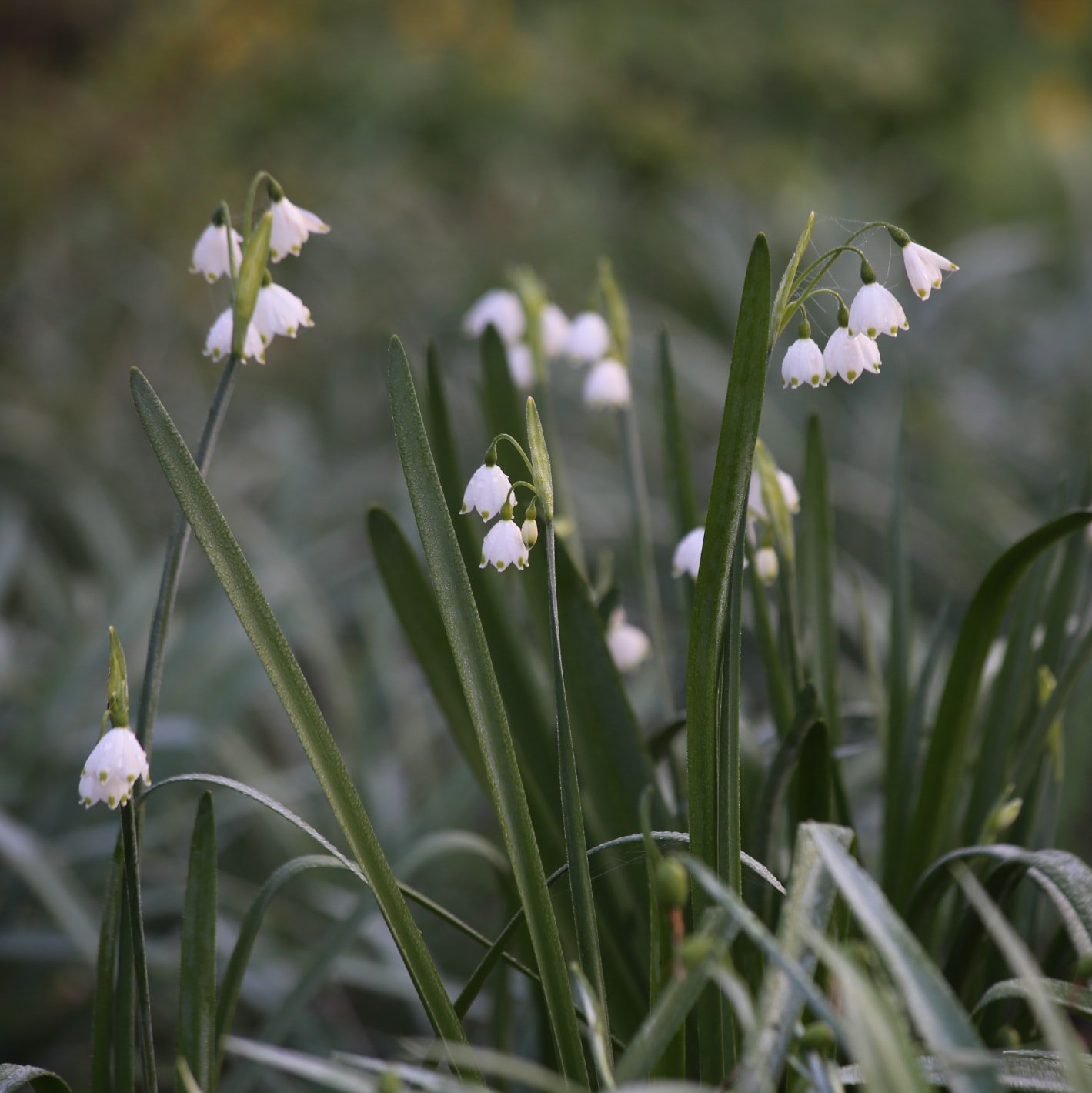
Commonly called summer snowflake or Loddon lily, Leucojum aestivum is another UK native, found across Europe, from Spain, to Ireland, to Ukraine. These are bulbs suited to shady or semi-shaded spots, where their flowers last the longest. After flowering, flotation chambers develop on the seed pods, but remain attached to the stem. When river levels rise or flooding occurs, the stems break, allowing the seed pods to float downstream to be deposited on floodplains and riverbanks. They do well under trees and in shady meadow areas.

Helleborus argutifolius is the Corsican hellebore, or the holly-leaved hellebore. The architectural foliage grows on many stiff stems, which eventually fall down in winter to make way for a full flush of new shoots, at which point the old stems can be cut off. This native of Corsica and Sardinia can be in flower from new year through to summer. Works well with Euphorbia characias, the Mediterranean spurge, another calm-green drought-tolerant perennial, both of which seed around gently.

Magnolia denudata, the lilytre or Yulan magnolia, is native to central and eastern China. This species has been cultivated in Chinese Buddhist temple gardens since 600 AD, where the white flowers on bare branches are regarded as a symbol of purity. The spring flowers emit a citrus-lemon fragrance to attract their beetle pollinators, but the large and sumptuous thick petals are prone to browning if touched by frost.
The three most common garden magnolias are Magnolia × soulangeana, Magnolia stellata, and Magnolia grandiflora. M. × soulangeana, known as the saucer magnolia, forms a medium-size tree with large tulip-like flowers in white, maroon, and most commonly, pink. It is a hybrid between M. denudata and M. liliiflora that happened independently in Japan and Paris in the early 1800s. The Japanese native Magnolia stellata is generally seen in gardens as a medium-sized slow growing shrub, with white star-like flowers. This species is very closely related to the much larger and faster growing tree Magnolia kobus; the two may even be different size forms of the same species. Lastly, the evergreen glossy-leaved Magnolia grandiflora is a popular choice, commonly known as the southern magnolia or bull bay. This tree is native to the southeastern United States and was historically planted at the base of warm walls to be trained onto them when it was thought they were quite tender. Many now form huge trees.
Beyond these three magnolias frequently seen in gardens, the genus has around 220 species, and many of these cross-hybridise too. Here are some fabulous tree magnolias that have come about by hybridisation;
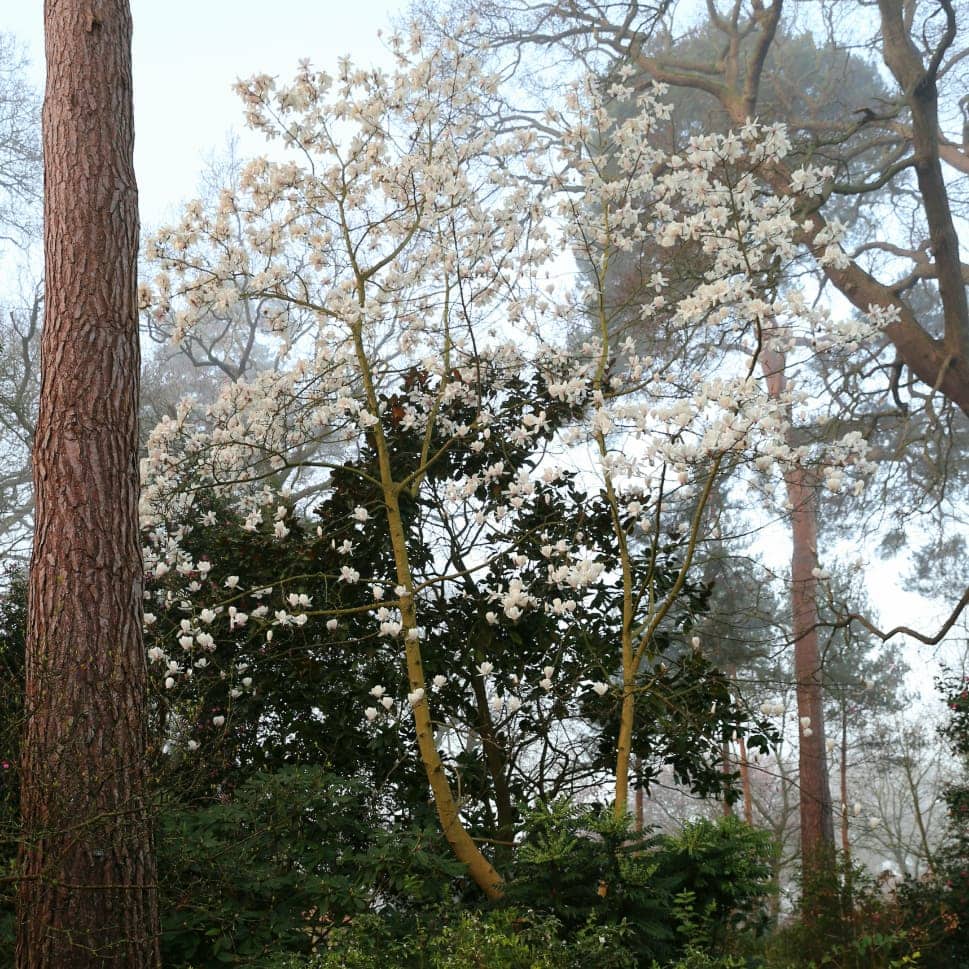
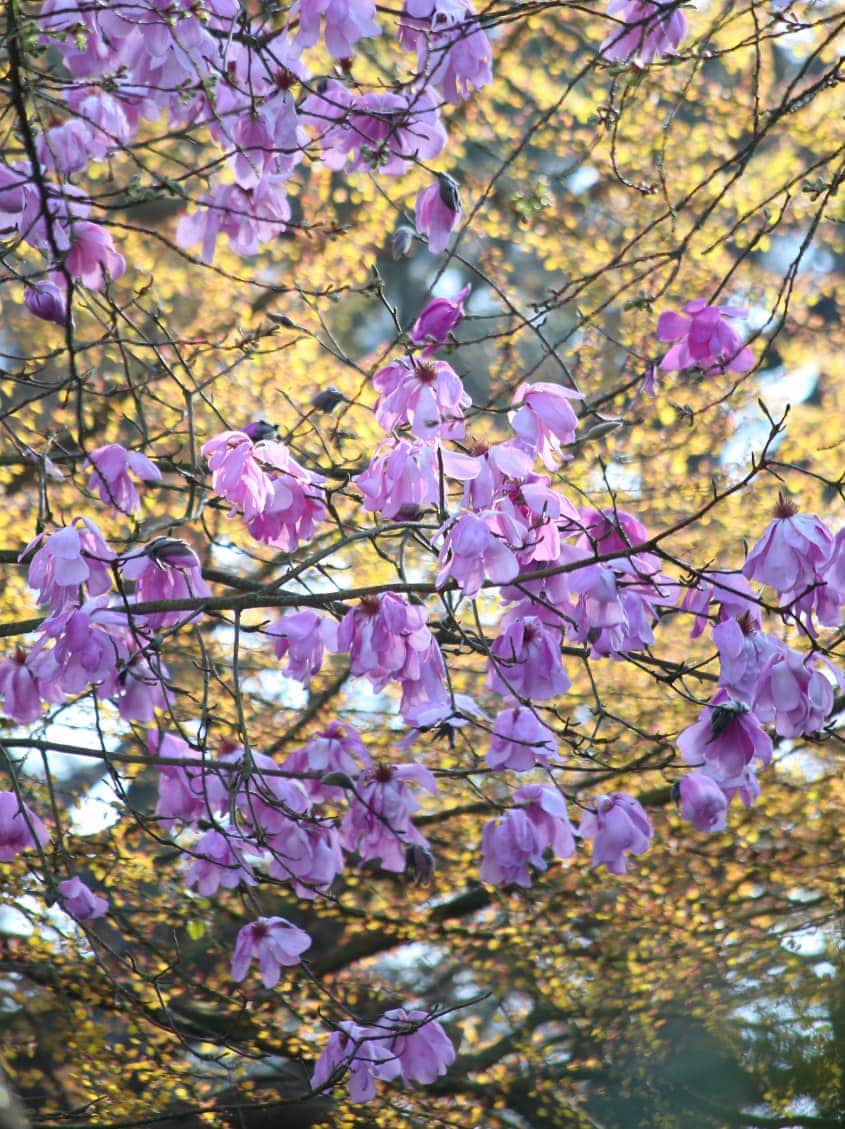
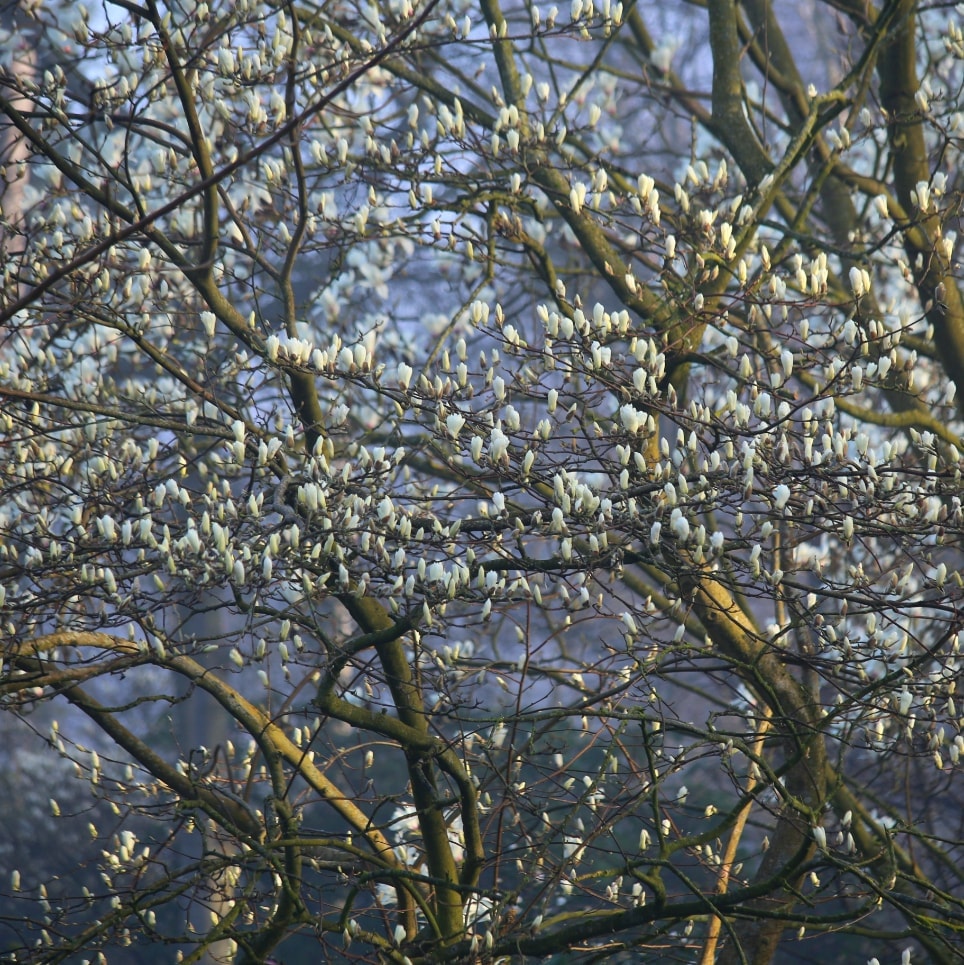
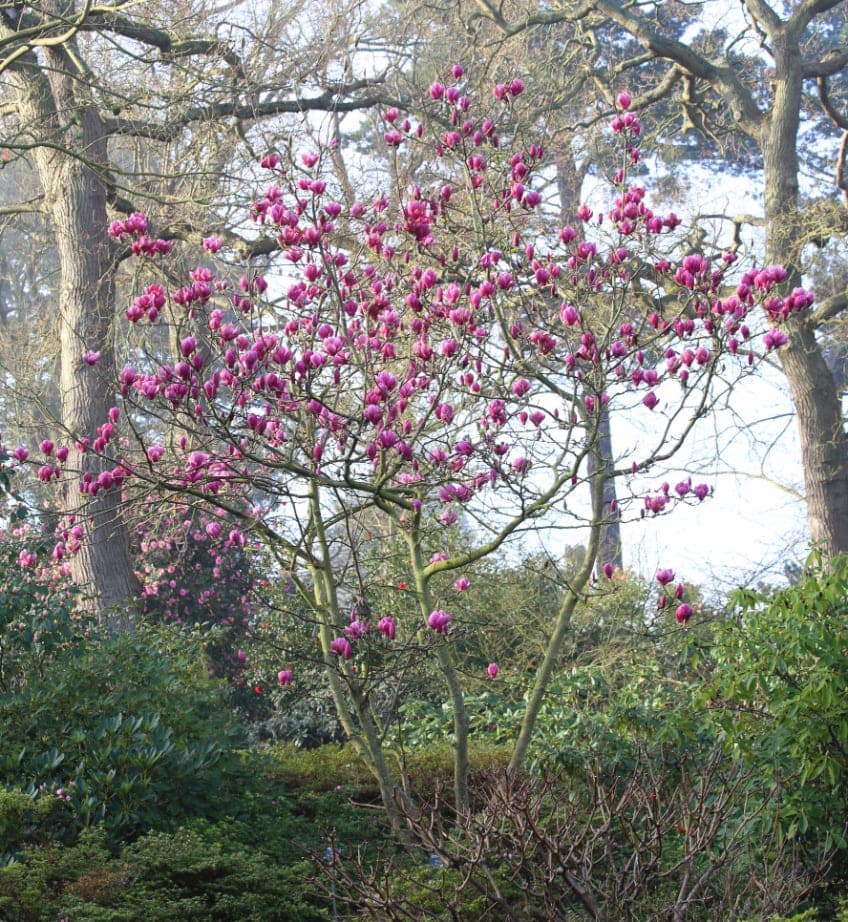
All photographs by Owen Hayman
Owen Hayman
Owen joined the Bestall & Co planting and aftercare team in spring 2019. He is an RHS qualified horticulturist, holding a full Level 3 Diploma in Horticulture, and recently came in the top 3 at the Northern Regional Final of The Young Horticulturist of the Year 2019. After first doing a foundation diploma in Fine Art, he went on to gain a degree and masters in Plant and Soil Science from the University of Sheffield in 2014. Owen worked as a researcher on various field research projects in Alaska, Panama and Borneo. When not away in the field, he became obsessed with visiting gardens and nurseries across the British Isles and the Netherlands, developing his own garden, and then taking on a walled allotment garden as a personal project. He realised his true passion was in horticulture, and so moved away from academia and into the world of specialist plant nurseries and professional gardening.
Owen is now studying the Wisley Diploma, but continues to write articles for us on a monthly basis, and we're delighted to maintain contact with such a passionate and knowledgable plantsman.



